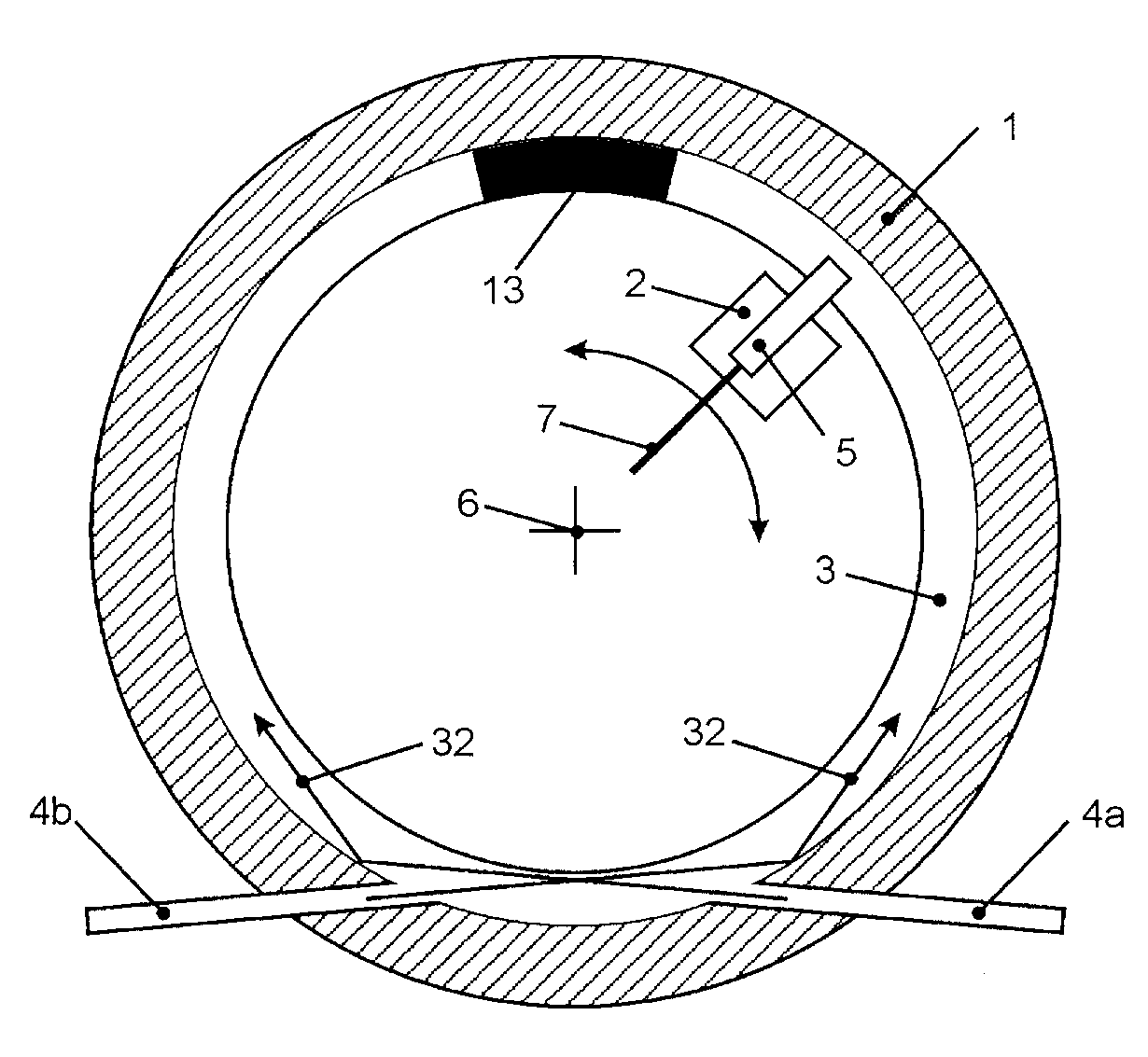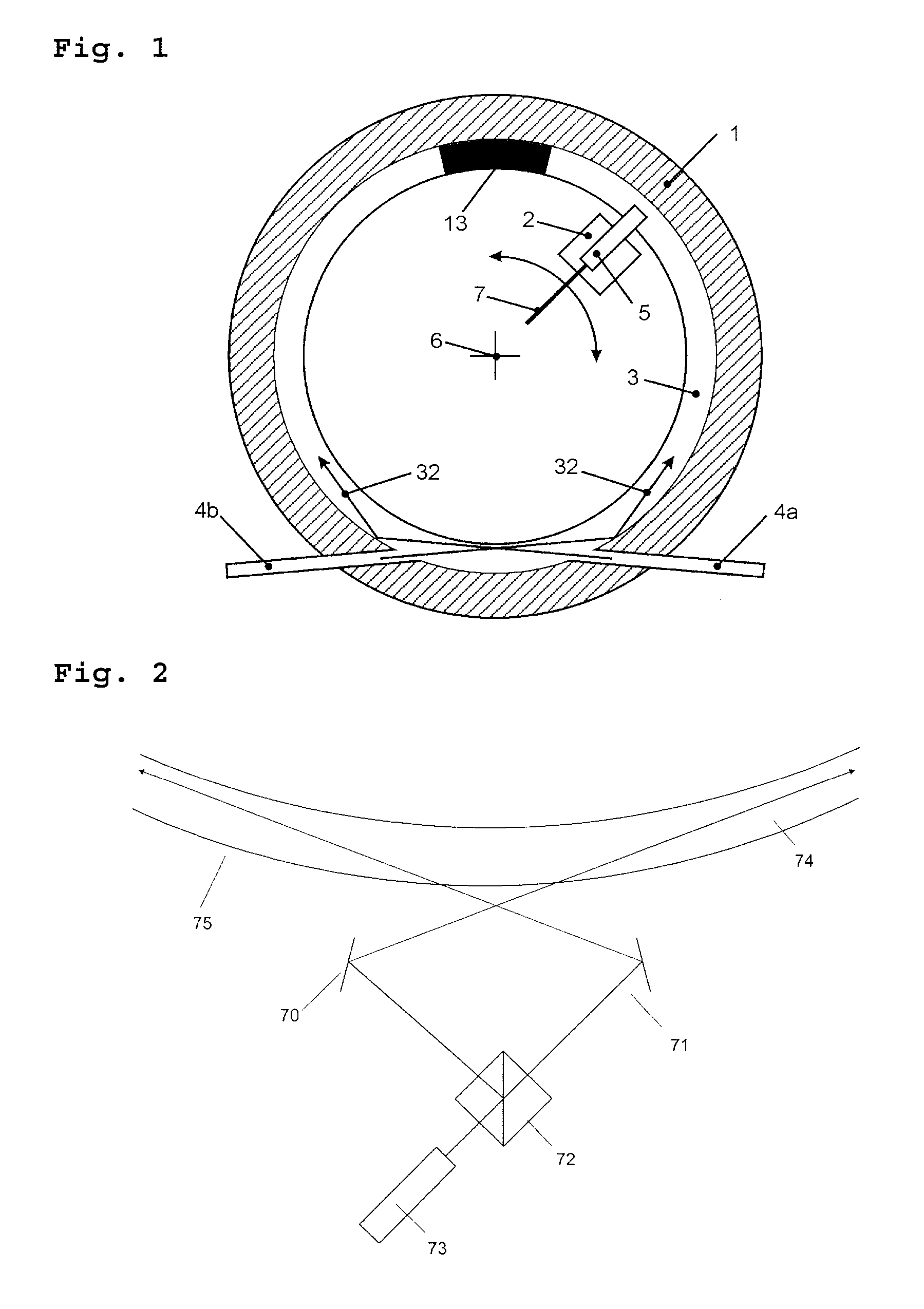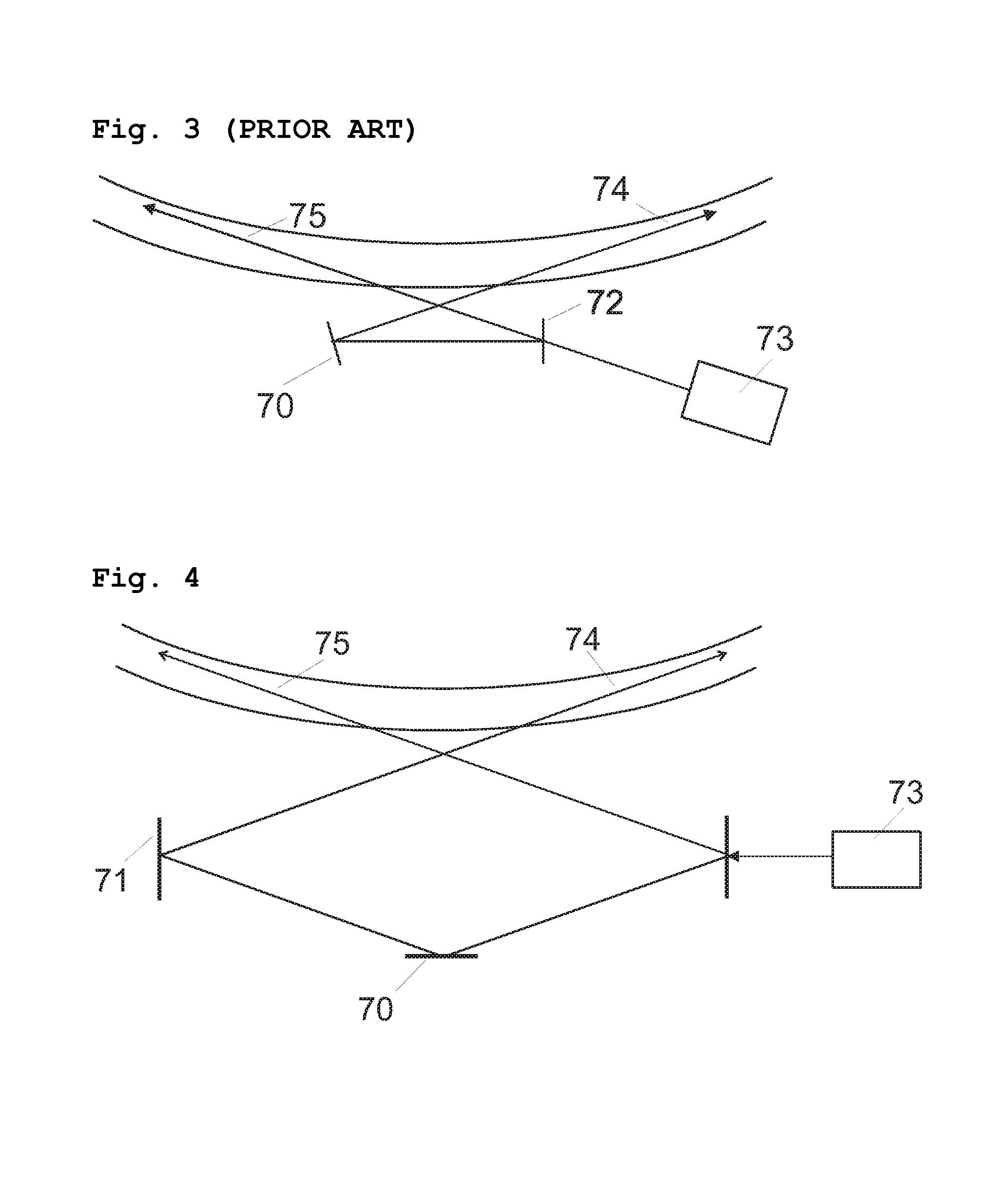Optical rotating data transmission device with an unobstructed diameter
a transmission device and optical technology, applied in the field of optical transmission devices, can solve the problems of inability to circumfer the device, inability to effectively solve the bandwidth limitation problem, and inability to achieve the circumference of the device, etc., to achieve low optical attenuation, high data rate, and high mechanical speed of movement
- Summary
- Abstract
- Description
- Claims
- Application Information
AI Technical Summary
Benefits of technology
Problems solved by technology
Method used
Image
Examples
Embodiment Construction
[0018]FIG. 1 shows in a schematic form a plan view of a part of a device according to the invention. A first unit (1) serves to accommodate an annular light guide (3). This light guide is, for example, a trench that is mirror-coated on the inside. A second unit (2) rotates relative to the first unit about a rotation axis (6). The second unit contains a second light coupler (5). The operation will now be illustrated separately for the two respective transmission directions from the first unit to the second unit, and from the second unit to the first unit. Transmission from the first unit to the second unit: light from a not illustrated transmitter is fed into the light guide (3) by means of both parts of a first light coupler (4a, 4b) at the same phase with respect to the modulation signal. On the right-hand side of the illustration the light from the first light coupler (4a) travels as far as the absorber (13). Simultaneously the light from the first light coupler (4b) travels as fa...
PUM
 Login to View More
Login to View More Abstract
Description
Claims
Application Information
 Login to View More
Login to View More - R&D
- Intellectual Property
- Life Sciences
- Materials
- Tech Scout
- Unparalleled Data Quality
- Higher Quality Content
- 60% Fewer Hallucinations
Browse by: Latest US Patents, China's latest patents, Technical Efficacy Thesaurus, Application Domain, Technology Topic, Popular Technical Reports.
© 2025 PatSnap. All rights reserved.Legal|Privacy policy|Modern Slavery Act Transparency Statement|Sitemap|About US| Contact US: help@patsnap.com



